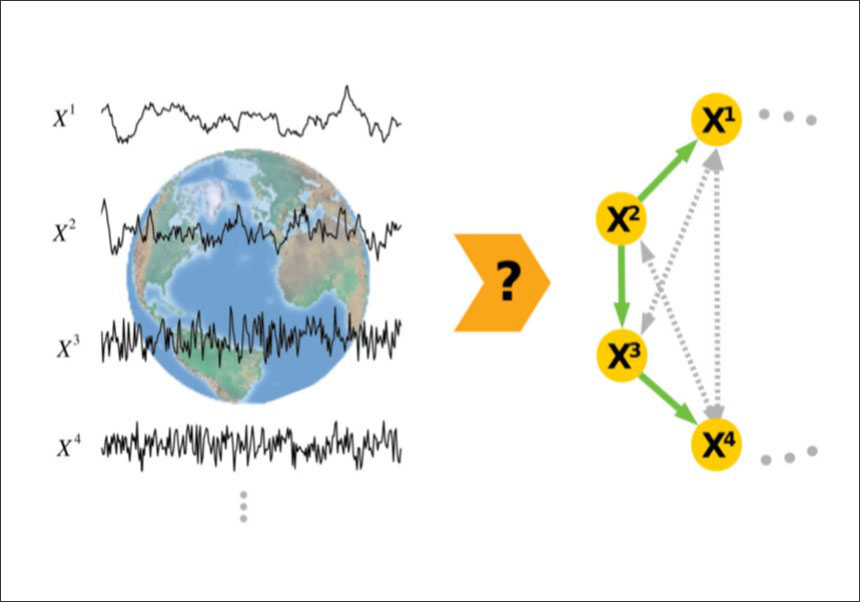
Researchers from the University of Valencia show recent advances and research opportunities in causal inference for the Earth and environmental sciences. The new algorithms integrate causal reasoning using machine learning techniques. The objective is to improve the understanding, based on observational time series, and promise to advance science and engineering. The current outlook has just been published in Nature Reviews Earth & Environment.
Distinguishing cause and effect is a task that has occupied scientists and philosophers for millennia. Inferring what is cause and what is effect in questions regarding nature is crucial for research in Earth and environmental sciences, since this will serve to improve the understanding of the determining factors the main climatic and environmental problems, beyond the simple statistical correlation.
Over the last few years, algorithms have been developed that improve the critical variables for monitoring the Earth and the ability to deduce causal relationships between variables has been increased by using only data. New analysis techniques based on time series data bring a novel approach to this field, as reflected in an article recently published in the journal Nature Reviews Earth & Environment.
In this review, a team from the University of Valencia, in collaboration with German universities and research centres, analyses the results in this field and addresses the need and importance of delving into causal inference. “Understanding and proving how changes in one variable cause changes in another is essential to develop more reliable and understandable artificial intelligence algorithms”, says Gustau Camps, Professor of Electronic Engineering at the University of Valencia, researcher at the Image Processing Laboratory (IPL) and primary author of the article. “Without causal inference, artificial intelligence is limited; it cannot detect the why of things. However, current causal methods can already identify whether a variable is cause or effect, and all from measurements and observations of time series”, he continues. “This will allow informed decisions on environmental policies, urban planning and adaptation to climate change, which directly impact society, the economy and sustainability”, adds Gherardo Varando, member of the research team at the IPL and co-author of the article.
Causal inference for time series, as the article is titled, reviews the families of existing methods, discusses the advantages and disadvantages, and presents practical examples of application in environmental sciences. It also summarises the possibilities of developing more robust, reliable, and explainable causal prediction algorithms; it evaluates the codes available for each specific problem and presents a web platform where scientists can validate their causal results (https://causeme.uv.es).
Integrating causal thinking into data-driven science will facilitate understanding of processes and develop more robust statistical and machine learning models for Earth and environmental sciences. Medicine, the economy and agriculture, among others, could benefit from these advances. “This is an extremely useful field, and we already have operational algorithms to attack real problems”, conclude the University of Valencia scientists.
Headed by Jakob Runge from the German Space Agency (DLR), the article has the participation of the Image Processing Laboratory (IPL) of the University of Valencia, the Technische Universität Berlin, and the University of Bremen (Germany).
Reference:
Jakob Runge, Andreas Gerhardus, Gherardo Varando, Veronika Eyring & Gustau Camps-Valls. Causal inference for time series. Nature Reviews Earth & Environment 4, 487–505 (2023). https://doi.org/10.1038/s43017-023-00431-y
PHOTO: “New causal inference algorithms can learn causal relationships between variables from time series data and return a causal graph that transparently explains and quantifies those relationships. For example, from time series of temperature, humidity, evaporation, and photosynthetic activity of the last decades, it is possible to learn how these processes are related in each region of the planet, how long it takes for a change in temperature to affect agricultural production, and what is the change in one variable when another changes. Likewise, once the causal variables have been identified, the rest can be discarded to implement more robust and simple prediction algorithms".
Links:
















